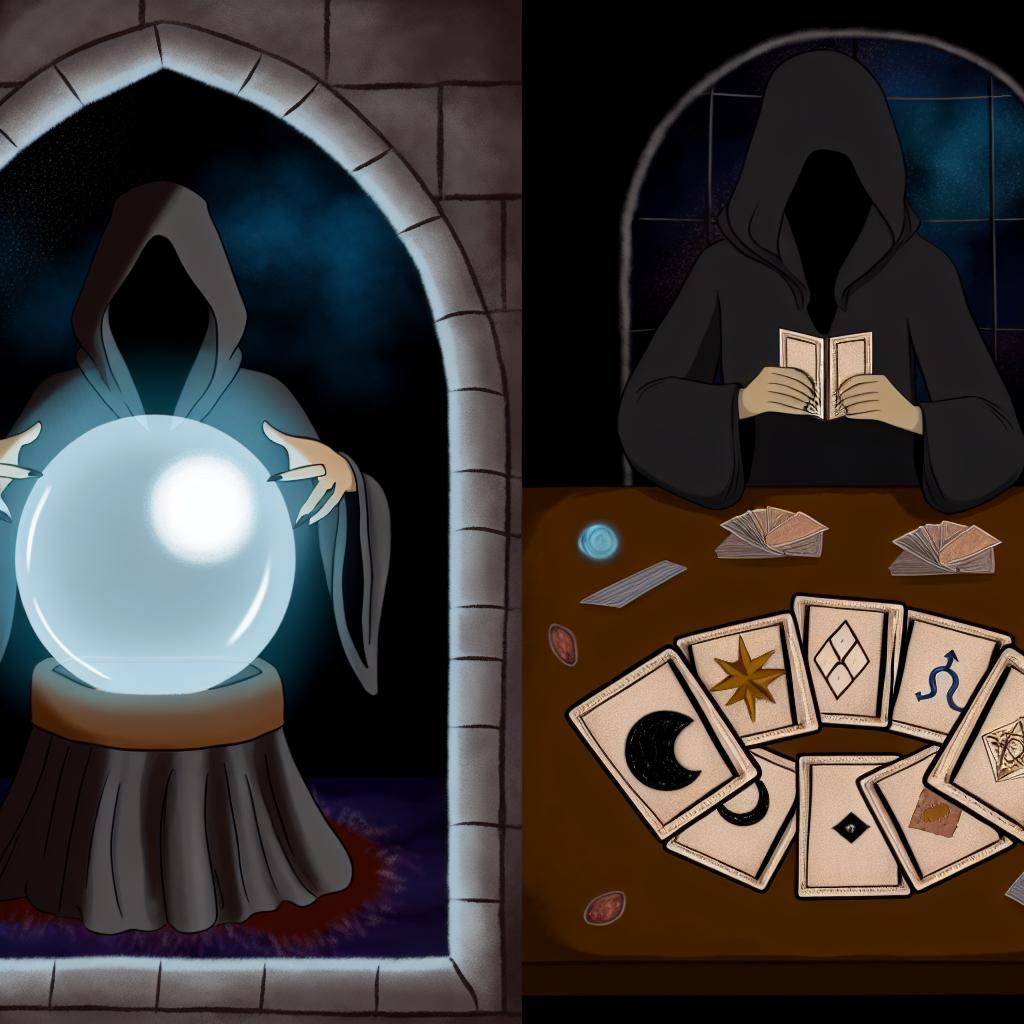
Understanding Scrying and Its Place in Divination
Scrying, along with various other forms of divination, has played a significant role in human culture, providing insight and understanding beyond the ordinary scope of perception. These practices have been utilized for centuries, aiding individuals in gathering information about future events, the self, or the surrounding environment. In this document, we will delve into the nuances of scrying, contrasting it with other divinatory forms, and exploring their unique characteristics and cultural significance.
What is Scrying?
Scrying, sometimes referred to as “seeing” or “peeping,” is an age-old practice that involves gazing into a chosen medium to obtain visions or insights. The mediums can range from crystal balls and mirrors to water surfaces. Practitioners engage in this process by relaxing their minds and attentively looking into these reflective or transparent surfaces. Through this gaze, they believe they can perceive images, symbols, or scenes that could guide them or predict future events. Due to its reliance on intuition and personal interpretation, scrying can be considered highly subjective and individualistic.
Scrying Mediums
Various materials and objects serve as tools for the practice of scrying. Though crystal balls are iconic to many, they represent just one of several mediums employed in this practice:
Water: Water serves as a common scrying tool due to its reflective nature and fluidity. Practitioners might use water contained in bowls or sourced from lakes and natural reserves. The movement and patterns on the water’s surface are believed to provide insights through reflective imagery.
Mirrors: Mirrors used in scrying are often darkened or subtly reflective to aid in focusing the practitioner’s attention and sight. These properties are believed to help in the reflection of the practitioner’s subconscious or spiritual visions.
Crystals and Gemstones: Transparent or clear stones, such as quartz, can concentrate energy and aid the user in visualization. The unique cuts and refractive properties of these stones can potentially guide practitioners in their interpretive journey.
Fire and Smoke: The dynamic movement of flames or swirling smoke serves as a medium for obtaining insight. Practitioners interpret the dances of flames or the curling paths of smoke to derive meaning, seeking guidance from its ever-changing form.
Other Forms of Divination
While scrying is rooted in the interaction with visual mediums, numerous other divination practices utilize different methodologies and tools. Understanding these differences provides insight into the subtle contrasts between various divinatory traditions.
Tarot and Oracle Cards
Tarot reading is a structured form of divination that involves drawing and interpreting a spread of cards to gather insights about the past, present, or future. Each card carries specific meanings, which the reader combines based on the context and arrangement of the spread. Tarot systems and oracle cards emphasize a balance between introspection and external influences, documented within the symbolic language of the cards.
Astrology
Astrology is the study that examines celestial positions and movements to draw insights into human affairs and natural phenomena. In contrast to the subjective and experiential nature of scrying, astrology relies on mathematical and theoretical frameworks. This divination practice interprets cosmic influences based on the precise calculations of planetary positions and alignments.
Runes
Runic divination involves the use of ancient symbols derived from Northern European traditions. Practitioners cast or lay out runes to provide insights. Each rune bears a unique meaning, guiding interpretations through its historical and cultural significance. This form merges traditional knowledge with the intuitive analysis of rune patterns.
Conclusion
The most pronounced distinction between scrying and other divinatory practices lies in the divergent methods and tools utilized to derive insight. Scrying, with its emphasis on personal intuition and subjective interpretation through reflective surfaces, offers a unique path for those drawn to its mystical approach. On the other hand, practices like tarot and astrology present more structured symbolism and frameworks for understanding. Each form of divination caters to different preferences and sensibilities, providing a variety of paths for those seeking insight into the spiritual and mystical realms.
Understanding these differences enhances the journey into divination, allowing for an appreciation of each practice’s depth and cultural background. For individuals keen on exploring these traditions, recognizing the unique aspects of each divination form can enrich their exploratory journey into the mystical arts.
